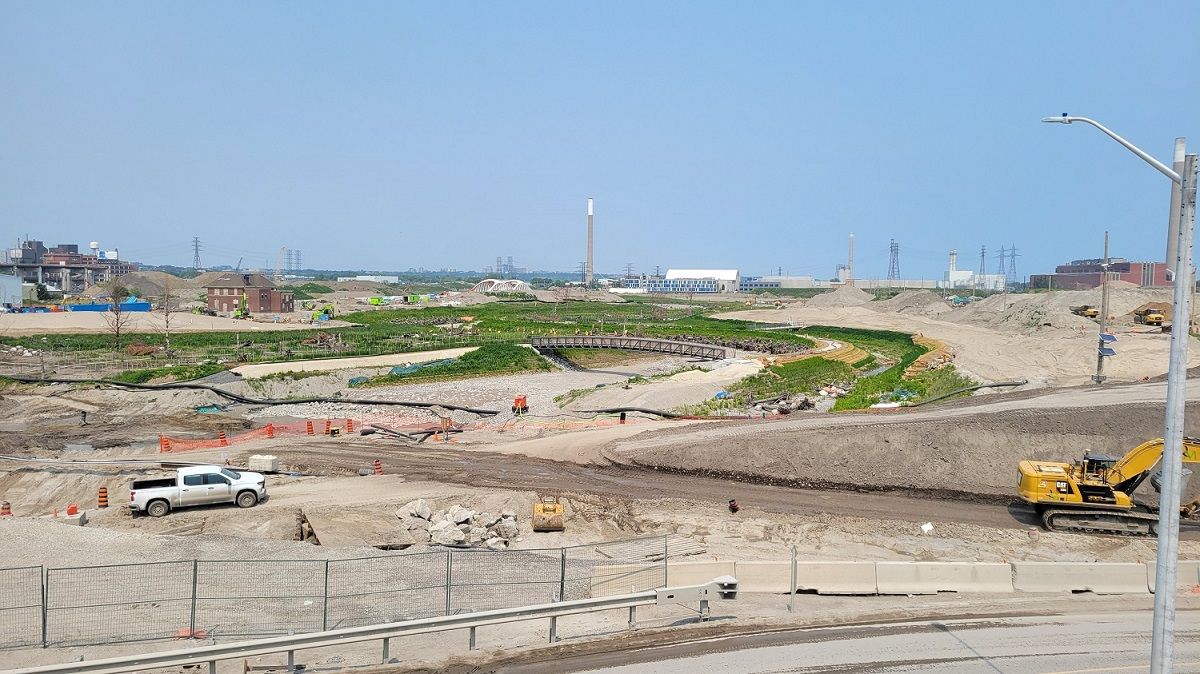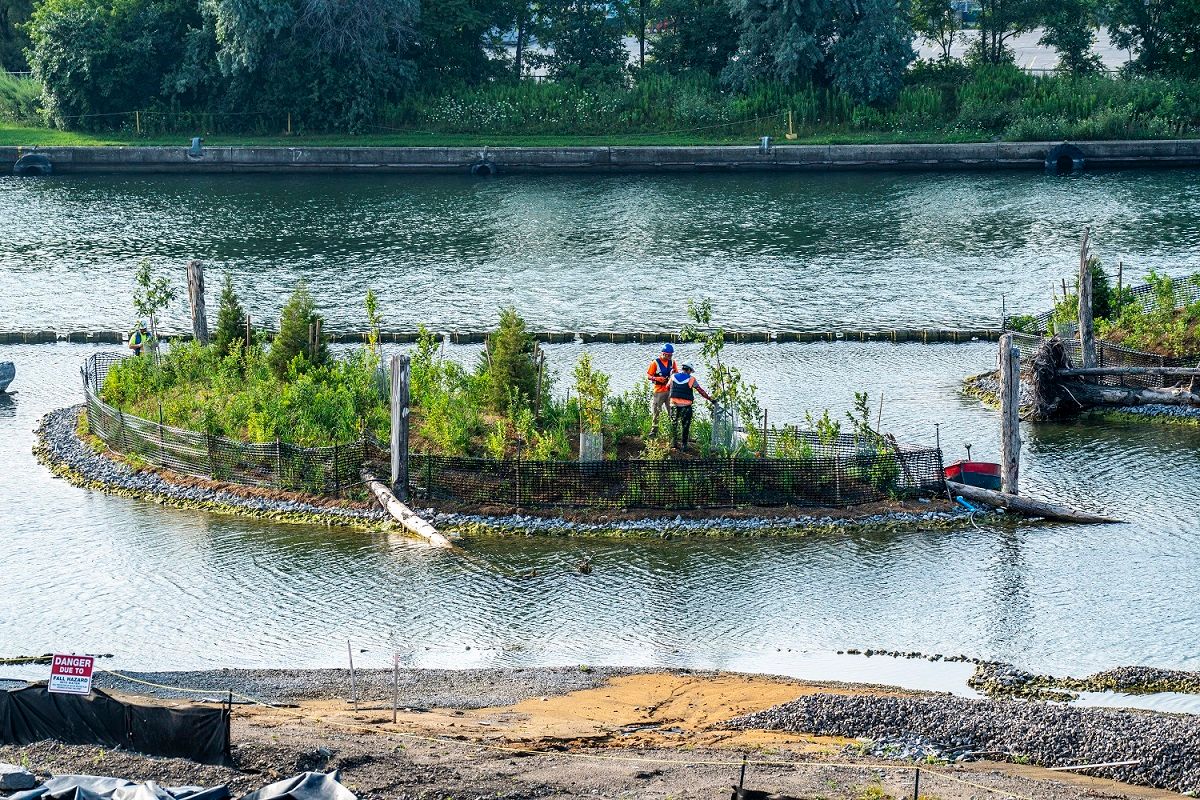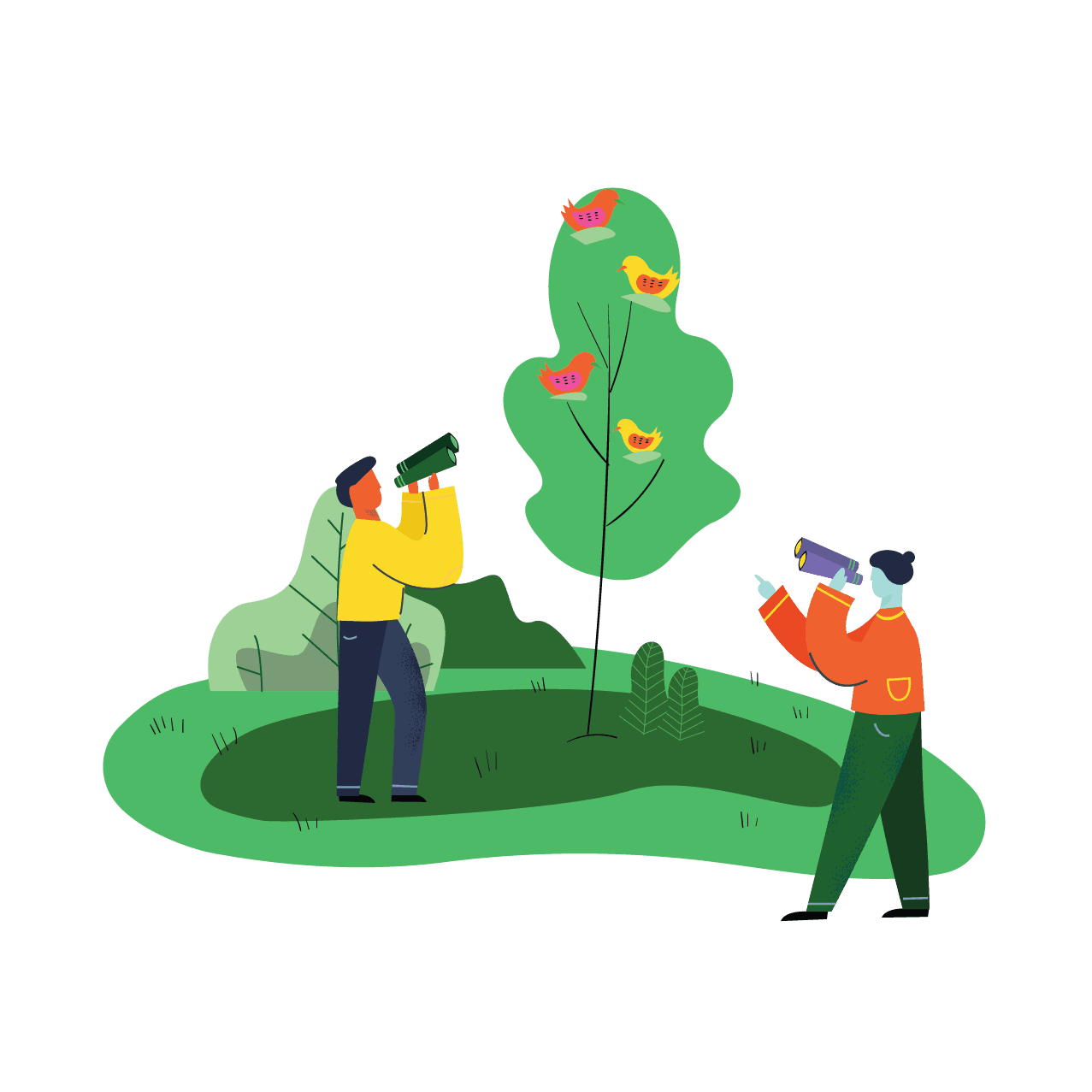- Many Canadian cities have networks of streams that were buried or channelized as part of urban development processes that viewed nature as an obstacle to be tamed.
- Recent “daylighting” projects to restore buried streams are taking place to restore biodiversity, watershed health, and manage flooding due to climate change.
- Toronto’s Don Mouth Naturalization project is the largest such project in the country, using techniques that will work with water flows rather than against them.
The Don River, which runs north-south through Toronto and ends at Lake Ontario, has a long and complicated history. As The Globe and Mail points out, the river has provided transportation and food for Indigenous Peoples, been a boon to beekeepers, used as an industrial and human waste dump, was once perfumed for a royal visit, caught on fire twice, and finally was partially filled in and straightened in the early late 19th and early 20th centuries.
In the words of Jennifer Bonnell, York University professor and author of Reclaiming the Don: the Don is the “most-messed-with-river” in Canada.
Toronto isn't alone in mistreating its waterways. Many Canadian cities went on a similar crusade of burying, channelizing or filling in streams, rivers, and marshes to make way for urban development. Nature was often viewed as a thing to be tamed, rather than a force to be understood and respected.
Our survey found that 17% of cities have projects, planned or completed, to “daylight” buried rivers by restoring them to the surface, such as Vancouver’s Tatlow and Volunteer Park Stream Restoration project. Other projects approach daylighting through public art, as in the case of Toronto’s Garrison Creek, including murals that celebrate the importance of water to Indigenous Peoples.
Toronto is currently deep into a years-long, billion dollar project to “un-mess” the Don River. Led by Waterfront Toronto in coordination with the City of Toronto, the Don Mouth Naturalization and Port Lands Flood Protection project, aims to restore natural habitat and safeguard adjacent areas from flooding at the same time.
Waterfront Toronto is designing with natural forces rather than against them in the Don Mouth Naturalization project. By re-introducing the river’s meandering path as it meets the lake, the project will slow the flow of water, while new riverbanks are designed specifically to flood, protecting new neighbourhoods that will be built up around them. In a major storm–more common due to climate change–the Don River could see “water equivalent to two-thirds of Niagara Falls” flow down its length.
As Waterfront Toronto Parks and Public Realm Project Director Shannon Baker told Park People in 2021, the goal is not to block water or prevent it from rising and ebbing, but “to accept it and just be resilient to it in the same way that a natural system would be.” For example, vegetation was carefully selected for species that “can bend and flex and allow water to move through.” The riverbank is divided up into different sections from upland forest at the top of bank down to submergent (underwater) marsh, each with their own planting palette.

The task is gargantuan–the largest urban construction project in the country. It has involved moving and cleaning tons of earth, shaping and stabilizing riverbanks using techniques like wood anchors and shale rock, and plantings to support a new river ecology and habitats. Finally park spaces will be created along the edges with various programming, including new trails, beaches, and areas for boat launches to allow for more interaction with the lake.
In the end, by placing the rivermouth back in its natural state, the hope is that all of this engineering will be invisible to anyone enjoying the newly created spaces. While the scale of this project is enormous, it still offers lessons for other cities looking to renaturalize and daylight formerly buried and channeled waterways, reconfiguring their relationship to water from one of control to one of mutual respect.
- Raise public awareness of buried urban streams and channelized waterways by publishing maps, partnering with organizations to offer guided walks, and commissioning public art.
- Explore opportunities in new or existing parks to daylight portions of buried urban streams to advance both climate change resilience goals (e.g., flood protection, water infiltration, increased biodiversity) and recreation opportunities (e.g., water interaction, natural respite).
- Integrate lessons on working with water rather than against it into smaller park projects by introducing green infrastructure elements like rain gardens, bioswales, and permeable paving where possible.


